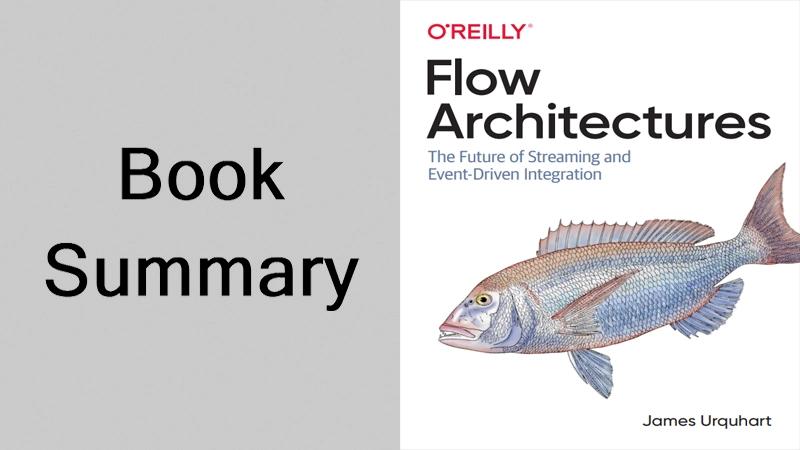
Book Summary: Flow Architectures: The Future of Streaming and Event-Driven Integration by James Urquhart - February 2021
When developing distributed event-driven systems without a solid understanding of flow and streaming concepts, there is a significant risk of creating a system that fails to harness the full potential of streaming technology.
Book Flow Architectures serves as a valuable resource for understanding flow architecture, covering essential flow architecture topics in its first four chapters. Firstly, it introduces engineers to the concept of flow, explaining how it facilitates efficient data processing and propagation in distributed event-driven systems. Then, it explores the reasons why organizations embrace flow architecture. After that, the book demonstrates how to assess the maturity level of the existing flow architecture components using techniques like Wardley Mapping and Promise Theory. Lastly, it conducts a literature review of industry-available technologies and methods for implementing flow, equipping engineers with informed choices for building effective distributed event-driven systems.
I believe that every software engineer who wants to adopt the distributed even-driven architecture should read this book before studying other educational resources implementing event-driven architecture with a target programming language from the beginning. In the following, you can read the chapter names along with a summary of each chapter.
- Chapter 1, "Introduction to Flow," provides an introduction to the concept of flow, covering its fundamental definition and the core concepts that stem from this definition.
- Chapter 2, "The Business Case for Flow," presents a compelling argument for why various institutions, including businesses, governments, and non-profits, will adopt flow as it becomes more prevalent.
- In Chapter 3, "Understanding the Flow Value Chain," the book leverages Wardley Mapping and Promise Theory to demonstrate the inevitability of flow and identify the essential components of flow systems likely to emerge.
- Chapter 4, "Evaluating the Current Streaming Market," offers an overview of the messaging and event-driven architectures currently available, which will serve as guiding principles or foundational elements for future flow systems.
- Building upon the insights from Chapter 3 and the Wardley Map, Chapter 5, "Evaluating the Emergence of Flow," explores the areas where significant innovations will be needed to support genuine flow systems in the future.
- Finally, Chapter 6, "Building for a Flow Future," concludes the discussion by providing a survey of actionable steps that can be taken today to prepare for a flow-centric future and actively contribute to its realization.


Leave a Reply
Your e-mail address will not be published. Required fields are marked *